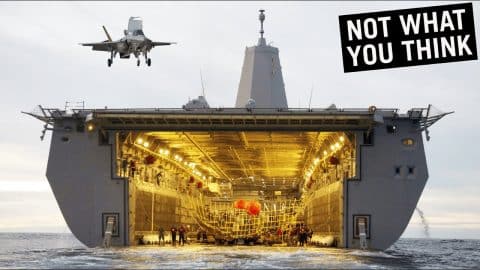
YouTube / Not What You Think
Even though the US Navy “only” has 11 aircraft carriers, there are another 9 aircraft-carrying ships in their arsenal – they just go by a different name.
These are called amphibious assault ships and are different from traditional supercarriers.
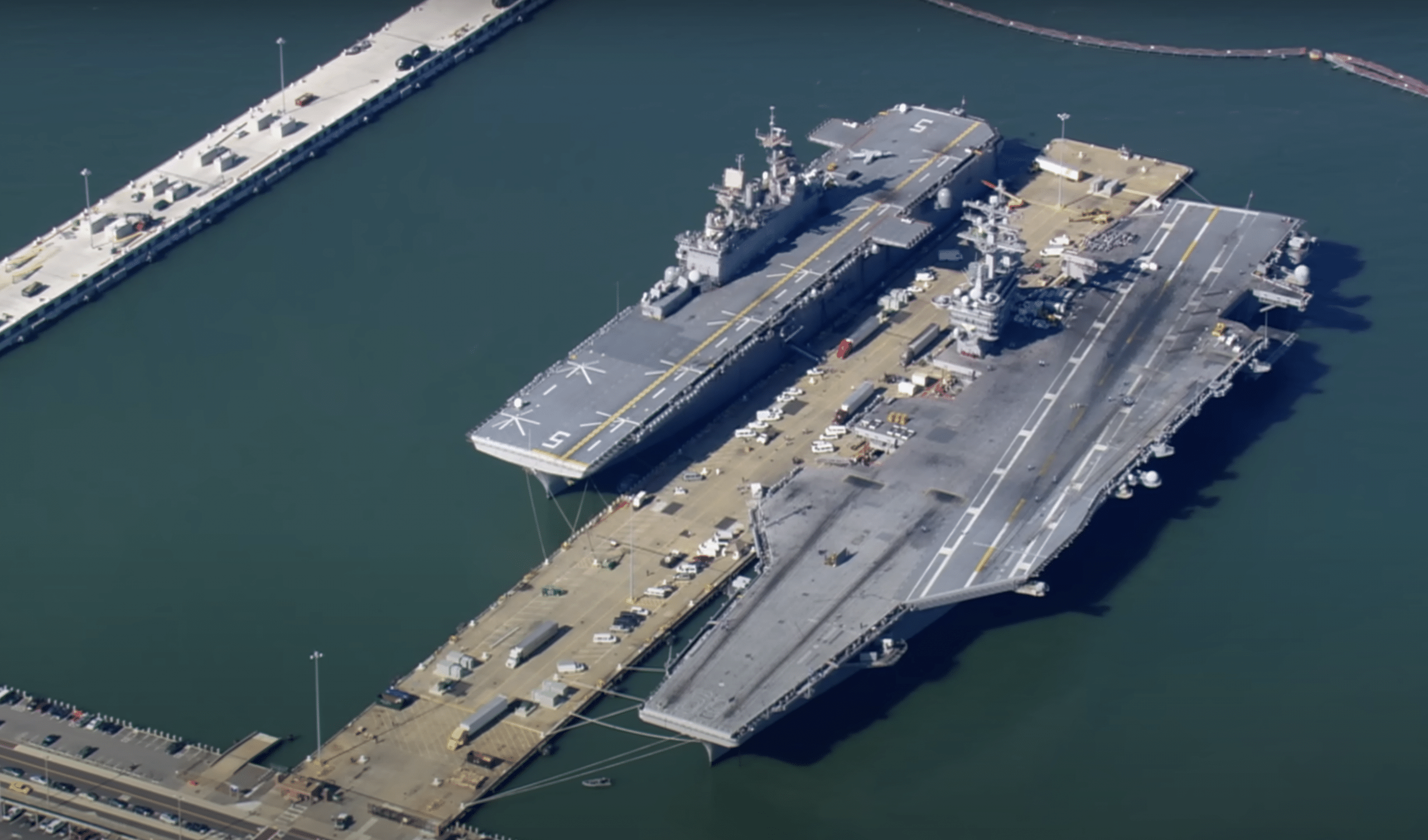
On average, American aircraft carriers are 1,092 ft long, while amphibious assault ships range around 850 ft. The latter uses their decks more like a landing pad – not a runway, meaning they mostly employ aircraft that are capable of vertical take-offs and landings such as the F-35B, AV-8B, and V-22 Osprey.
Moreover, the official designation of these ships is LHD or LHA, which stands for Landing Helicopter Dock or Landing Helicopter Assault.
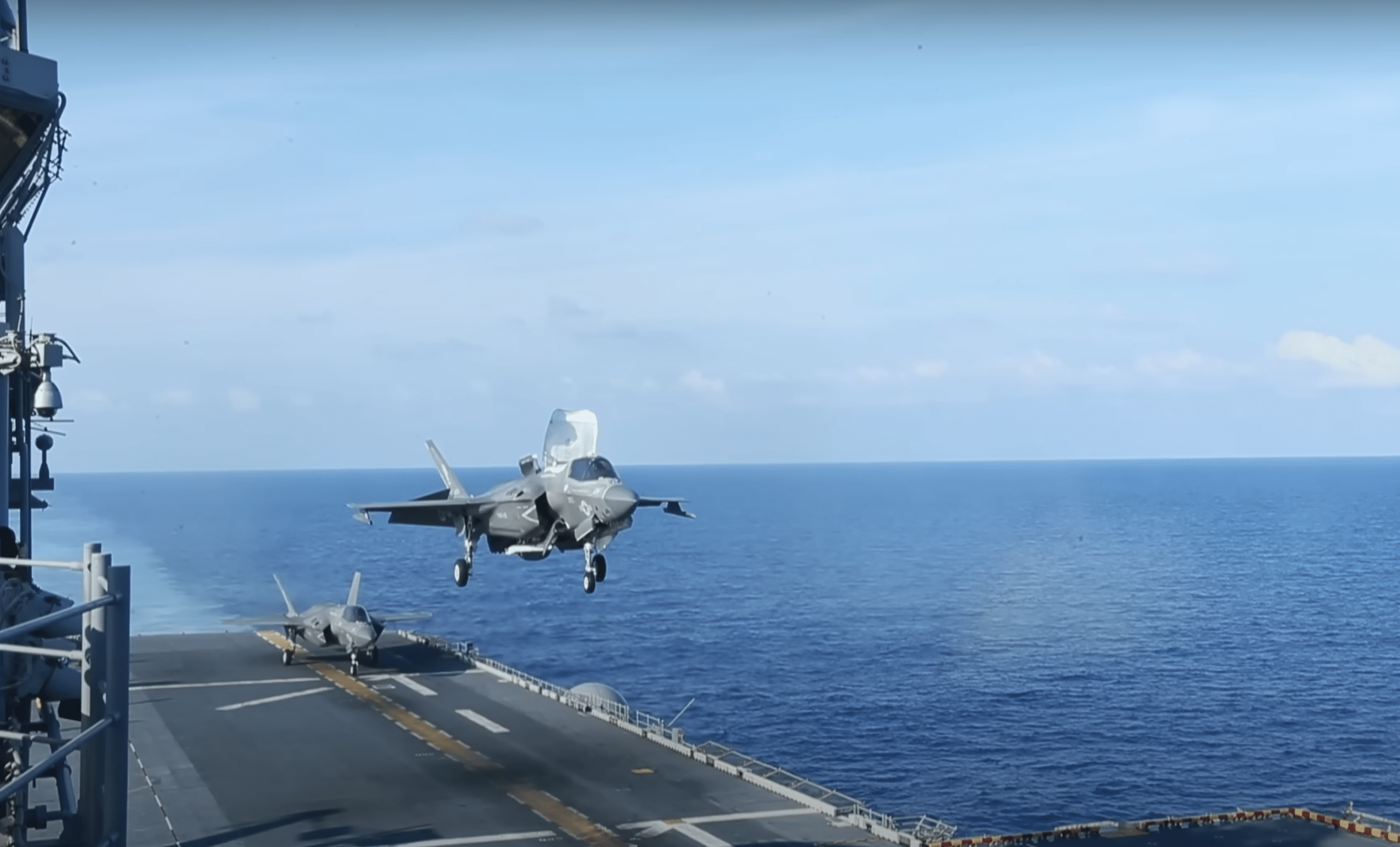
In comparison, Ford-class carriers operate more like a floating airport than a ship. The longer flight decks allow them to launch heavier, fixed-wing aircraft like the F-18 Hornet and E-2 Hawkeye. These heavier planes serve missions related to air dominance, reconnaissance, and electronic warfare.
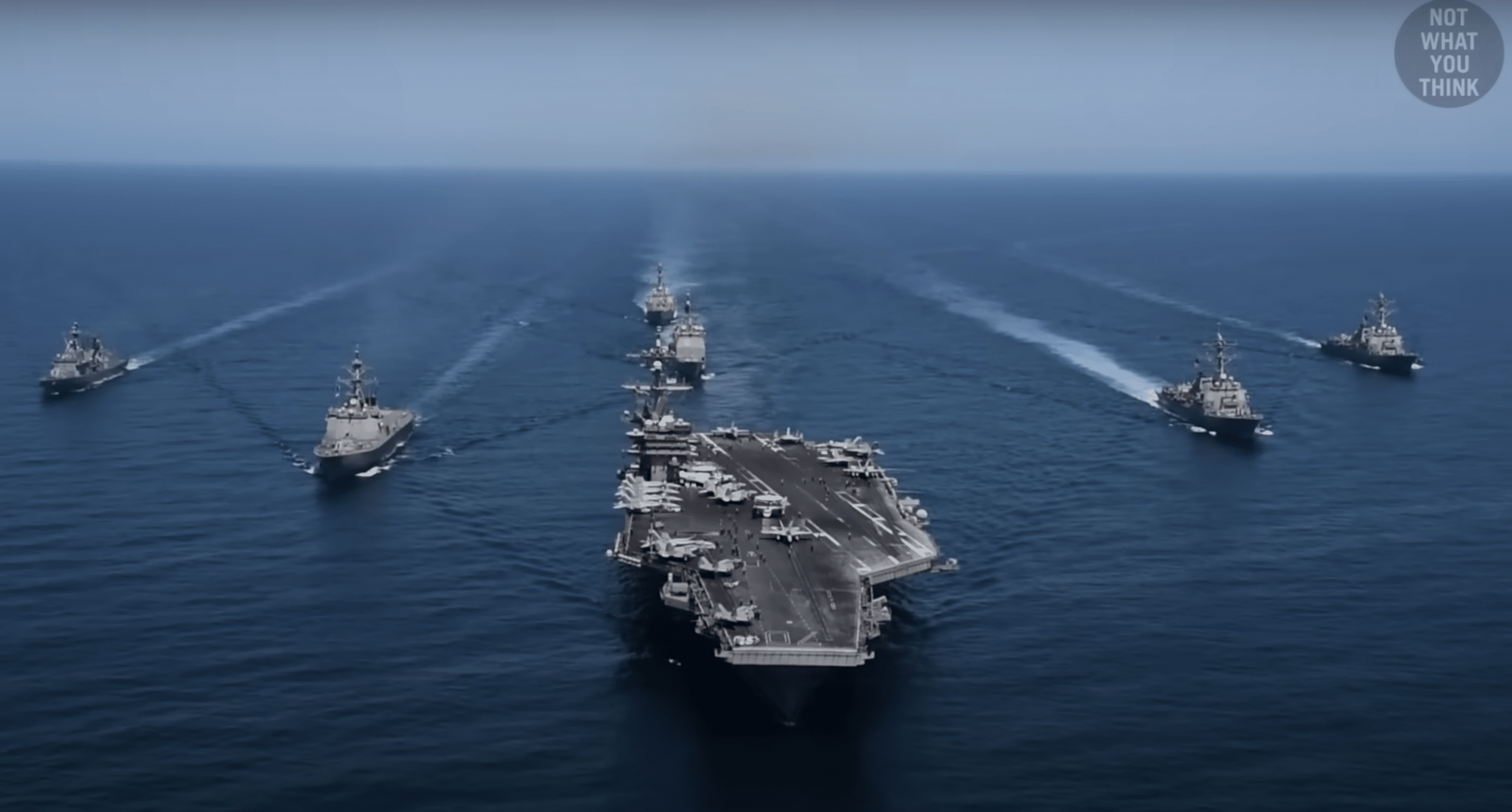
On average, LHDs cost $2 billion dollars, while LHAs cost around $3.4, and supercarriers costing over $13 billion to build. This doesn’t take into account the cost of operating one supercarrier, which can amount to nearly $1 billion every year.
LHDs can deploy forces both above and below the deck thanks to its well deck, an internal housing bay that can carry: 3 hovercrafts, 12 Mechanized Landing Craft, or 40 Amphibious Assault Vehicles, depending on the mission.
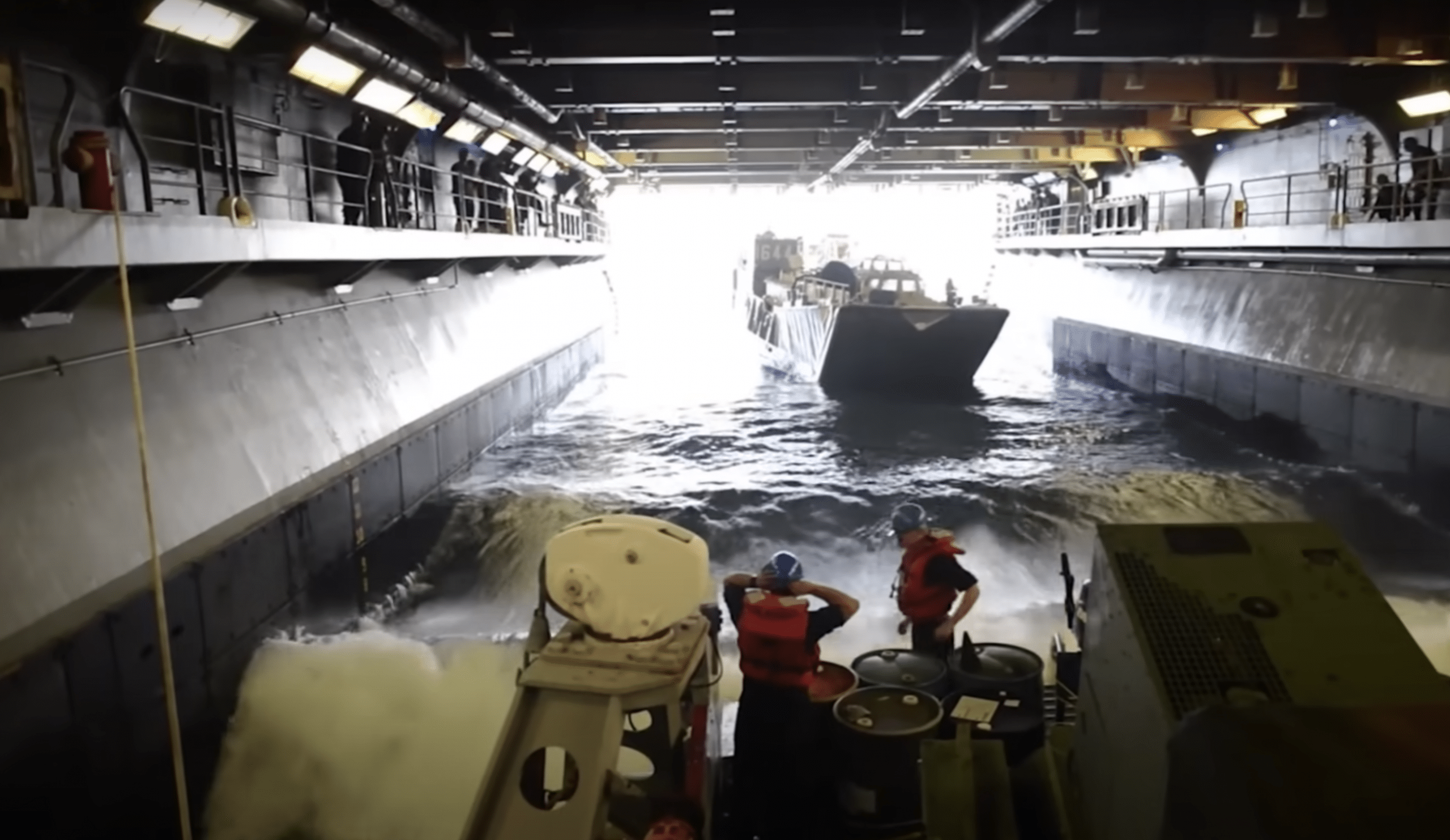
This feature makes the LHDs more suited for quick reaction missions with smaller but more intense operational timelines.
The latest addition to the Navy’s fleet of amphibious assault ships introduced two major changes.
With a displacement of 15,000 tons, LHAs have a bigger displacement than the French aircraft carrier, Charles de Gaulle.
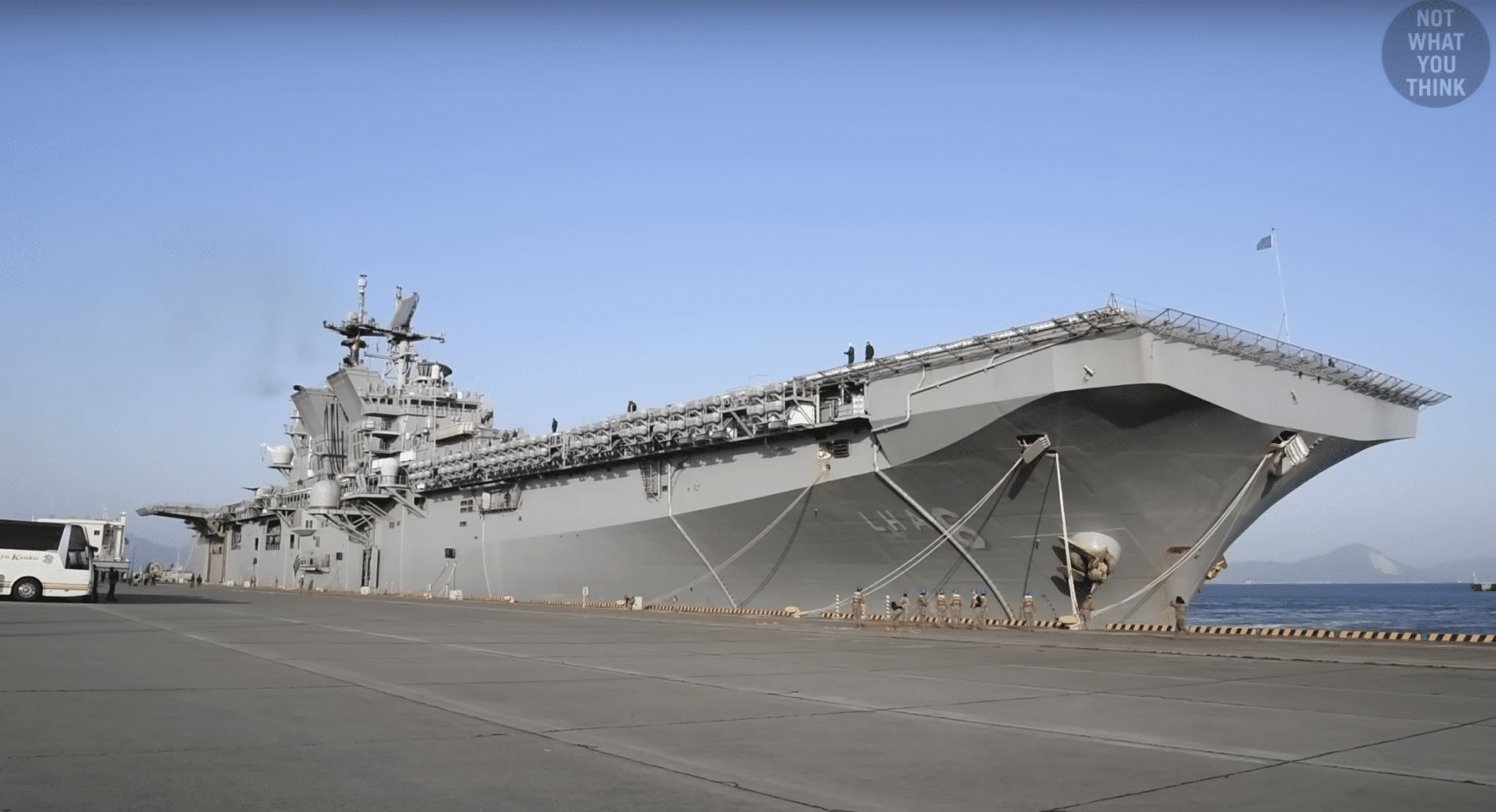
They’re also optimized for flight operations, omitting the well deck to allow more room for aircraft, spare parts, weapons, and their fuel. These ships are currently being built with a focus on deploying F-35Bs as their main combat component, earning them the nickname ‘Lightning Carriers.’